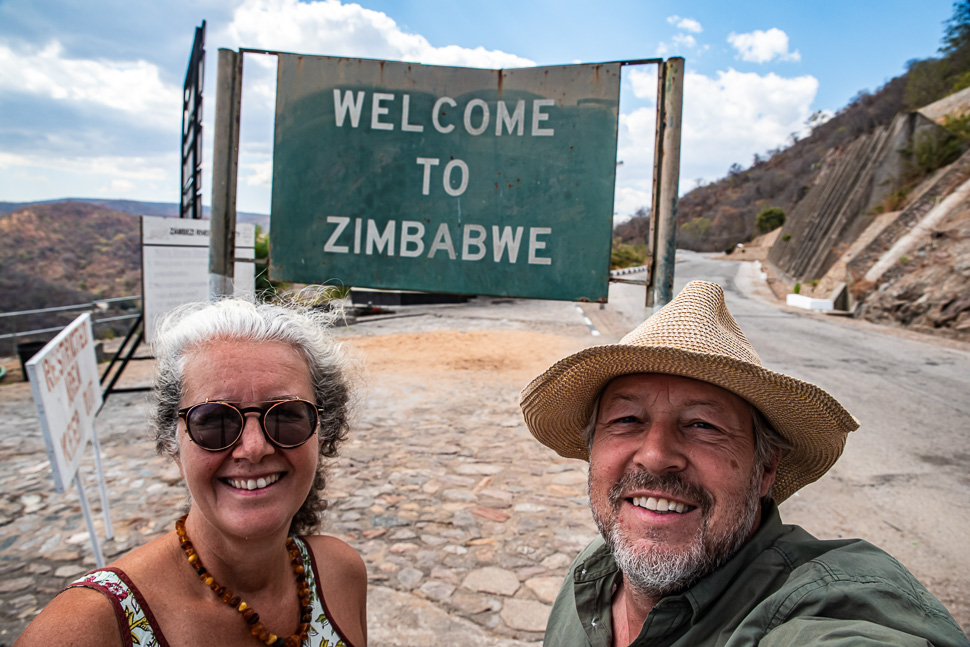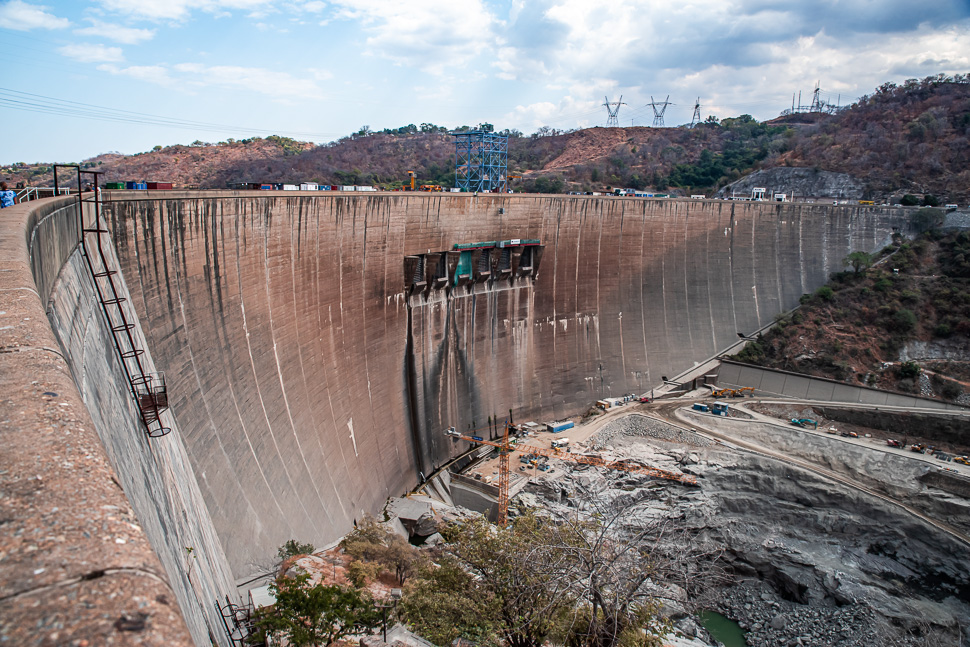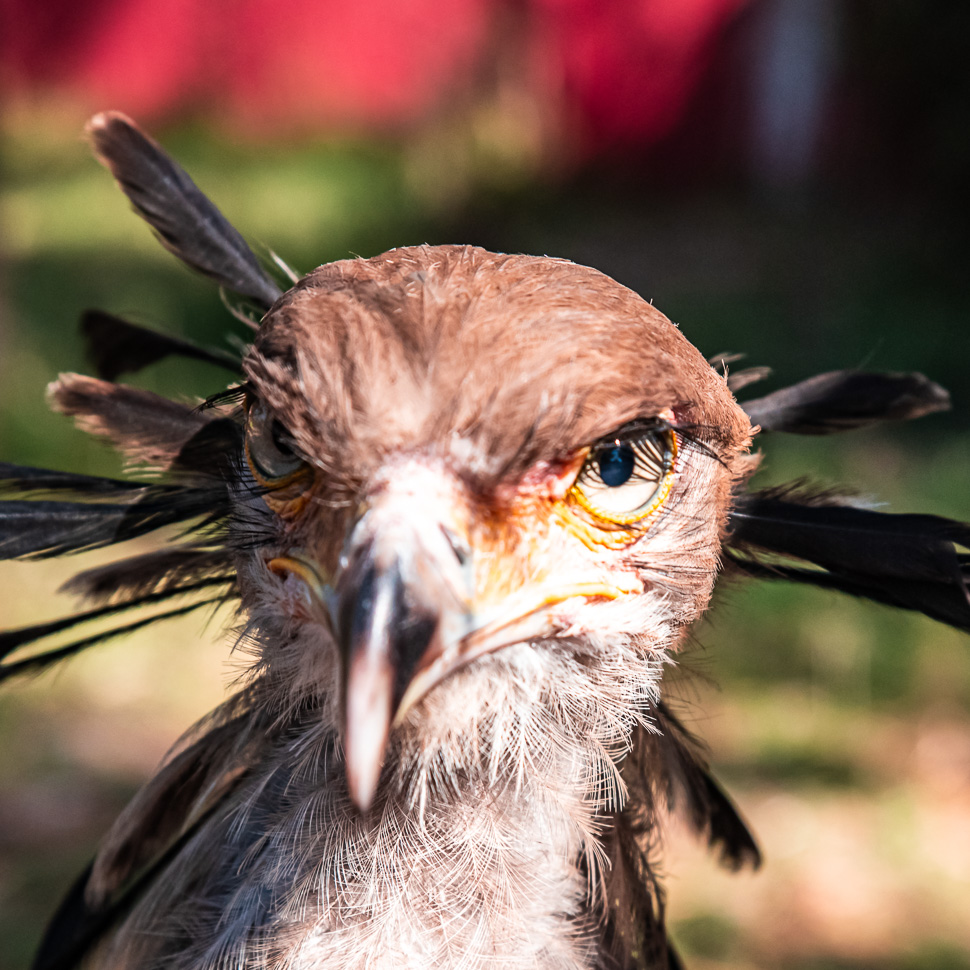
We entered Zimbabwe at the Kariba Dam and had a short and easy border procedure (abt. 2 hours). If the customs guy wouldn’t have been on lunch break, it would have been even better 😉

The dam was constructed between 1955 and 1959 by the Government of the Federation of Rhodesia and Nyasaland, a ‘federal colony’ within the British Empire. The double curvature concrete arch dam is 128 metres high and forms Lake Kariba, which extends for 280 kilometres. It was officially opened by Queen Elizabeth The Queen Mother in 1960.

At the moment they are redesigning the plunge pool to stabilize it against further erosion along the dam foundation. A temporary water-tight cofferdam allows them to complete the work under dry conditions.

After the dam was completed, thousands of animals were threatened by the lake’s rising waters. The ones which had sought higher ground, often found themselves on an island with no escape, while the water was still rising. From 1958 to 1961, Operation Noah captured and moved around 6,000 large animals and numerous small ones to the new lake shore, a difficult endeavour. The creation of the reservoir also forced resettlement of about 57,000 Tonga people living on both sides along the Zambezi.

At Lake Kariba, we found a nice place at Warthog Camp, where animals roam freely. We had a group of Zebras in our campsite with a young foal which still had his baby beard and the remains of the umbilical cord at his belly.



We left the Kariba Lake in direction to Harare, stopping at the Chinhoyi Caves for the night. There is a big recreational area next to the caves which is great for camping, just that the ablutions block had no water.

The cave system is composed of limestone and dolomite. The main cave, called Sleeping Pool, has a colapsed roof and contains a pool of cobalt blue water. Divers have discovered a submarine passage leading to other caves.




Our next destination was Lake Chivero, where we wanted to camp at the Kuimba Shiri Bird Park. We took a route through the countryside, where some tar was left in the middle of the road, not always wide enough for a car. When we reached a better road again, Edi discovered that one of the shock bolts had disappeared. As we know this is a week point we have enough in spare and it was quickly replaced.


At the Kuimba Shiri Bird Park, we visited the birds, which are kept there. Actually, after we had seen so many birds in their natural habitat, it felt sad to see the same ones in a cage. Of course there were many we hadn’t seen jet, but a visit to Central America might solve that. Here some portraits:





The campsite was nice and at the lake shore we could spot many birds which we had seen a lot during the last month like the Pied Kingfisher, African Jacana, Black-winged Stilt and Hamerkop. So much nicer to spot them in freedom.

We will now head into Harare, to make an appearance at the Telecommunications Authority for Edis HAM radio license, do some shopping and explore the surroundings.

Glad you made it into the new country. Have a nice and save trip through Zimbabwe. Hope to hear you on SAT (no member of any dx-club here). Go on with good work.